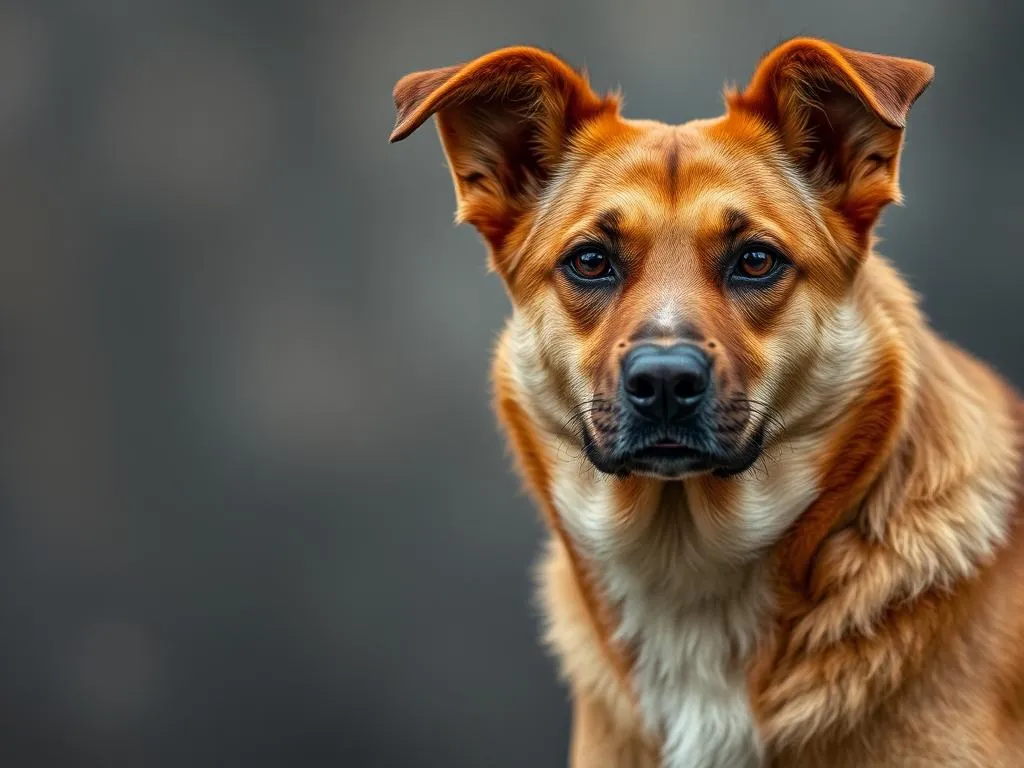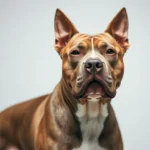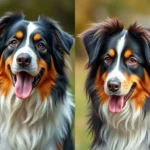
Introduction
Dog breeds refer to the various types of domestic dogs that have been selectively bred for specific traits, behaviors, and appearances. Understanding different dog breeds is essential for prospective pet owners to ensure they select a companion that fits their lifestyle and family dynamics. Among the many classifications of dog breeds, red dog breeds stand out for their striking appearance and unique characteristics. This article delves into the world of red dog breeds, exploring their distinctive traits, care requirements, and overall suitability for families.
Understanding Dog Coat Colors
Dog coat colors are determined by genetics, with various genes influencing the pigmentation of fur. Red is a vibrant and appealing coat color seen in several breeds, ranging from light auburn to deep mahogany shades. The significance of coat color extends beyond aesthetics; it often aids in breed identification and can even indicate certain health predispositions.
Red as a coat color can be found in various breeds, each with its own unique charm and personality. Understanding these breeds helps potential owners appreciate the diversity within the category of red dog breeds.
Popular Red Dog Breeds
Irish Setter
The Irish Setter is a breed known for its beautiful, flowing red coat and friendly disposition. Originating in Ireland, these dogs were initially bred for hunting and retrieving game.
-
Temperament and Behavior: Irish Setters are known for their energetic and playful nature. They are affectionate and thrive on human companionship, making them excellent family pets.
-
Health Considerations: Common health issues include hip dysplasia and certain eye conditions. Regular vet check-ups are essential to monitor their health.
-
Grooming and Care Needs: Their long, silky coat requires regular brushing to prevent matting and reduce shedding. Bathing should be done as necessary.
Redbone Coonhound
The Redbone Coonhound is a versatile breed known for its striking red coat and excellent hunting skills. This breed has roots in the southern United States, originally bred for raccoon hunting.
-
Temperament and Behavior: They are friendly, loyal, and good with children. Redbone Coonhounds are social dogs that require companionship and regular interaction.
-
Health Considerations: They are generally healthy but can be prone to hip dysplasia and certain skin issues. Regular veterinary visits are important for maintaining their health.
-
Grooming and Care Needs: Minimal grooming is needed due to their short coat, but they do benefit from regular baths to keep their coat clean and healthy.
Vizsla
The Vizsla is another exceptional breed that exhibits a rich, golden-red coat. Originating from Hungary, this breed was developed for hunting and retrieving.
-
Temperament and Behavior: Vizslas are known for their affectionate and energetic demeanor. They are highly trainable and bond closely with their families.
-
Health Considerations: Common health issues include hip dysplasia and certain heart conditions. Regular veterinary care is crucial.
-
Grooming and Care Needs: Their short coat requires minimal grooming, but they should be brushed occasionally to remove dead hair.
Rhodesian Ridgeback
The Rhodesian Ridgeback is a unique breed known for the distinctive ridge of hair along its back that grows in the opposite direction to the rest of its coat. This breed hails from Southern Africa, where it was used for hunting lions.
-
Temperament and Behavior: Ridgebacks are known for their loyalty and protective instincts. They are also known to be independent, which can sometimes translate into stubbornness during training.
-
Health Considerations: They may be prone to conditions such as hip dysplasia and certain skin issues. Regular vet visits are essential for early detection and management.
-
Grooming and Care Needs: Their short coat is easy to maintain, needing only occasional brushing to keep it looking healthy.
Australian Cattle Dog (Red Heeler)
The Australian Cattle Dog, often referred to as the Red Heeler, is known for its intelligence and herding abilities. This breed was developed in Australia to herd cattle.
-
Temperament and Behavior: Red Heelers are highly energetic and intelligent dogs that require mental and physical stimulation. They are loyal and protective of their families.
-
Health Considerations: They can be prone to hip dysplasia and progressive retinal atrophy. Regular health check-ups are necessary to keep them in optimal health.
-
Grooming and Care Needs: Their short, dense coat requires minimal grooming, but they should be brushed regularly to manage shedding.
Characteristics of Red Dog Breeds
When exploring red dog breeds, there are several common physical and behavioral traits to consider:
-
Common Physical Traits: Red dog breeds often vary in size and weight, ranging from medium to large. Their coats can vary in texture, with some breeds having silky fur while others have a dense, short coat.
-
Temperament Trends: Many red dog breeds are known for their friendly and sociable nature. They tend to be energetic and require regular exercise to remain happy and healthy.
-
Intelligence and Trainability: Most red breeds are intelligent and eager to please, making them relatively easy to train. Early socialization and consistent training methods yield the best results.
-
Activity Levels and Exercise Needs: Red dog breeds typically require a significant amount of exercise. Daily walks, playtime, and mental stimulation are crucial to keep them engaged and prevent behavioral issues.
Health and Care for Red Dog Breeds
Like all dog breeds, red dog breeds may be prone to certain health issues. Awareness of these conditions can aid in early detection and treatment.
-
Common Health Issues: Many red breeds face health challenges such as hip dysplasia, eye conditions, and skin allergies. Regular veterinary check-ups are essential for monitoring health and managing any potential issues.
-
Importance of Regular Veterinary Check-ups: Routine exams help identify health problems early, allowing for prompt treatment. Vaccinations and preventive care should also be part of a regular health regimen.
-
Nutrition and Diet Recommendations: Providing a balanced diet tailored to the specific needs of the breed is critical. Consult with a veterinarian to determine the best feeding practices based on age, size, and activity level.
-
Exercise Requirements: Exercise needs can vary by breed but generally include daily walks, play sessions, and mental stimulation through training or interactive toys.
Choosing the Right Red Dog Breed for Your Family
Selecting the right red dog breed involves careful consideration of various factors.
-
Factors to Consider: Evaluate your lifestyle, living situation, and family dynamics before choosing a breed. Consider how much time you can dedicate to training, exercise, and companionship.
-
Matching Breed Characteristics to Family Needs: Research different red breeds to find one that aligns with your family’s activity level and temperament preferences.
-
Adoption vs. Purchasing from Breeders: Both options have their pros and cons. Adoption can provide a loving home to a dog in need, while purchasing from a reputable breeder can ensure a healthy puppy with a known lineage.
-
Resources for Finding Red Dog Breeds: Local shelters, breed-specific rescues, and reputable breeders are excellent resources for finding your perfect red dog companion.
Training and Socialization Tips for Red Dog Breeds
Training and socialization are crucial components of raising a well-adjusted dog, especially for red dog breeds.
-
Importance of Early Socialization: Early exposure to different environments, people, and other animals helps puppies develop into confident adults.
-
Training Techniques Effective for Red Dog Breeds: Consistent, positive reinforcement training methods work best. Keep training sessions short and engaging to maintain the dog’s interest.
-
Addressing Behavioral Issues: Common behavioral issues in red breeds can include stubbornness or excessive energy. Addressing these issues early with proper training can prevent them from becoming ingrained habits.
-
Recommendations for Professional Training Resources: Seek out professional trainers or local obedience classes that specialize in positive reinforcement techniques to further enhance your dog’s training experience.
Conclusion
Understanding red dog breeds offers valuable insights into the unique traits and care needs of these vibrant companions. It’s essential to thoroughly research and consider your options before choosing a breed that fits your lifestyle. Owning a red dog breed can bring immense joy and companionship, enriching your life with love and loyalty.
FAQs About Red Dog Breeds
- What are some common questions about red dog breeds?
-
Many prospective owners ask about the temperament and care needs of specific breeds, as well as their health concerns and grooming requirements.
-
What tips do you have for prospective dog owners?
-
Research different breeds thoroughly, consider your lifestyle, and be prepared for the time commitment involved in training and socialization.
-
Where can I find breed-specific rescues or adoption processes?
- Local shelters and breed-specific rescue organizations are excellent resources for adopting red dog breeds and finding support throughout the adoption process.
In summary, whether you’re drawn to the vibrant coat of an Irish Setter or the loyal nature of a Red Heeler, the world of red dog breeds is as diverse as it is rewarding.









